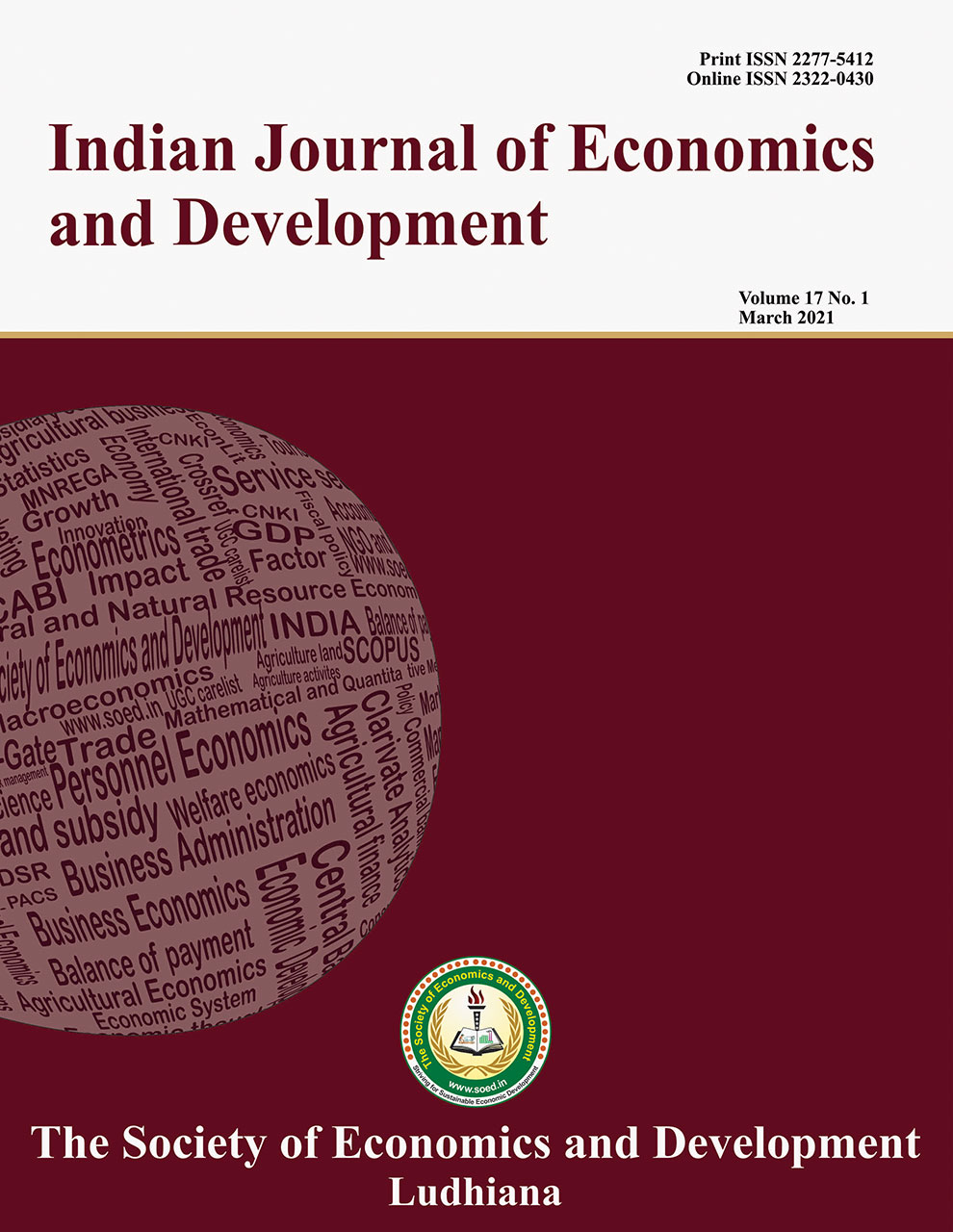Factors Determining Technology Adoption of BGREI Programme in Assam

Price: ₹ 500
Author: Pinky Pathok* and P.B. Gogoi
Author Address: Department of Agricultural Economics and Farm Management, Assam Agricultural University, Jorhat, 785013, Assam, India
Keywords: Adoption, BGREI, HYVseed, intervention, rice.
Abstract
An effort has been made in this study to assess the factors contributing to or hindering post-adoption phases of technology intervention under the BGREI programme in Assam. The Bringing Green Revolution to Eastern India (BGREI) programme is one of the sub-schemes under Rashtriya Krishi Vikash Yojana (RKVY). The programme was initiated in 2010-11 targeting improvement in “rice-based cropping system” in Eastern India comprising of seven states namely, Assam, West Bengal, Orissa, Bihar, Jharkhand, Eastern Uttar Pradesh and Chhattisgarh so that agriculture productivity is reasonably enhanced and stabilized in these areas. Under BGREI (Bringing Green Revolution to Eastern India) programme, adoption of new seed varieties, farm machines and implements, nutrients, pesticides and knowledge-based interventions are being promoted in different agro-climatic zones of eastern states. Amultistage stratified random sampling technique was followed and statistical methods such as percentage and Garette ranking technique were used for analyzing the data. A total of 120 farmers (80 beneficiaries and 40 non-beneficiaries) were selected from two different Agricultural Development Officer (ADO) circles namely, Baghchung and Allengmora to examine the post-adoption phases of BGREI programme. From the analysis, timely receiving of High Yielding Variety (HYV) seeds and increase in net income were found as the major contributing factors in the adoption of BGREI. The lack of irrigation facilities such as provision of shallow tube well coupled with the low level of farm mechanization was found as major factors hindering adoption.
Description
The Indian Journal of Economics and Development
Volume 15 No. 2, 2019, 312-316
DOI: 10.5958/2322-0430.2019.00039.8
Indexed in Clarivate Analytics (ESCI)
Pinky Pathok* and P.B. Gogoi
Department of Agricultural Economics and Farm Management, Assam Agricultural University, Jorhat, 785013, Assam, India
*Corresponding author’s email: pinkymunu93@gmail.com



